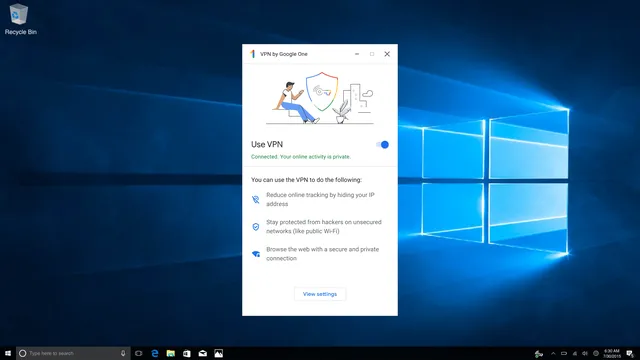Google One VPN desktop apps for Windows and Mac are now available
2 min. read
Published on

There are now dedicated Google One VPN desktop apps for Windows and macOS PCs starting today. This expands the availability of Google’s VPN service to other devices after its release to iOS earlier this year.
Some users can already download the new desktop apps from the Google One website, although others might have to wait a few more days to access them. To check if the app is already available for you, just go to Benefits > VPN protection for multiple devices > Download. After the download, you just need to start the installation process by clicking the VPNbyGoogleOneSetup.exe or VPNbyGoogleOne.dmg. Once activated, Google One VPN should put a VPN key and a green checkmark in your Windows taskbar or macOS menu bar.
It is important to note, however, that the VPN service is not available to everyone as it is only being offered in specific plans offered on Google One. Specifically, the service starts with the 2TB Premium plan (extends to other plans in the Premium tier), which exceeds the 100GB Basic ($1.99 per month or $19.99 per year) and 200GB Standard ($2.99 per month or $29.99 per year) plans. It costs $10 a month or $99.99 per year and can be shared with up to five individuals.
While this is good news to desktop Google One subscribers using Windows and macOS PCs, VPN by Google One is still limited to 22 locations, including Austria, Australia, Belgium, Canada, Denmark, Finland, France, Germany, Iceland, Ireland, Italy, Japan, Mexico, Netherlands, Norway, South Korea, Spain, Sweden, Switzerland, Taiwan, United Kingdom, and the United States. Google also didn’t introduce any new features to the VPN service, including the ability to allow access to sites and content only available to specific countries. That said, you can only use it for basic VPN purposes, such as masking traffic and IP address for protection when using unsecured networks. Also, the desktop app Google is currently offering for Windows users does not have 32-bit and ARM support, meaning it won’t complement 32-bit Windows 10 and the new Surface Pro 9 Microsoft recently launched.








User forum
0 messages